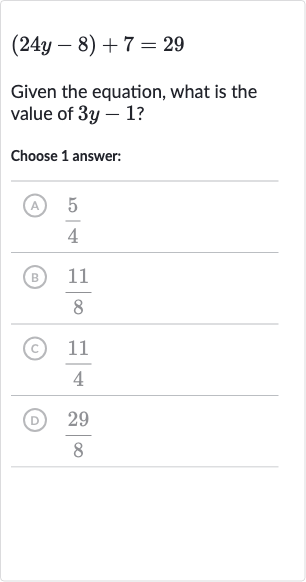Full solution
Q. Given the equation, what is the value of ?Choose answer:(A) (B) (C) (D)
- Simplify left side: First, simplify the left side of the equation by combining like terms.Now the equation is .
- Add to isolate y: Next, add to both sides of the equation to isolate the term with y.This simplifies to .
- Divide by : Now, divide both sides of the equation by to solve for .This simplifies to .
- Reduce fraction: Reduce the fraction to its simplest form.Both the numerator and the denominator are divisible by .
- Find : Now that we have the value of , we can find the value of .
- Multiply by : Multiply by to get the first part of the expression.
- Subtract : Now subtract from . Since is the same as , we can write:
- Perform subtraction: Perform the subtraction in the numerator.
More problems from Solve linear equations: mixed review
QuestionGet tutor help
QuestionGet tutor help
QuestionGet tutor help
QuestionGet tutor help
QuestionGet tutor help
QuestionGet tutor help
QuestionGet tutor help

